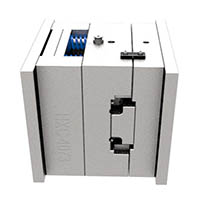How can plastic mold manufacturers prevent burrs from appearing in injection molded products?
Date: September 17, 2024

Burr edges are a common problem encountered in injection molding. Usually, the pressure on the plastic inside the mold cavity is too high, causing the parting force to be greater than the locking force, forcing the mold to open, causing the plastic to flow out and form burrs on the surface of the plastic part. However, there may be multiple reasons for this phenomenon. So how to effectively prevent burrs from appearing on injection molded products? Below, the editor from Shenzhen Donglai Injection Mold Manufacturer will share some methods with you, hoping to be helpful.

In terms of plastics,
There may be many problems, such as damage to the injection machine, improper calibration, and even issues with the tooling itself. Generally speaking, these issues are related to temperature, pressure, and operational timing, so finding solutions is not easy. Due to the viscosity of plastic, it can affect its flow rate and pressure loss. If the viscosity is too high or too low, it may cause plastic to flow into the small gaps of the mold, increase the parting force, and ultimately form burrs. Another plastic issue is the dryness and presence of impurities. Some plastics such as nylon and ABS have strong water absorption, and moisture can affect the properties of plastics. Therefore, during the molding process, many plastics must be pre baked to properly control their properties. Mixing impurities or mixing different types of plastics can make it more difficult to predict changes in plastic properties.
2. The pressure inside the mold cavity will change with filling.
When the mold cavity is not filled, the pressure at the molten front is close to zero, while the pressure at the injection port is higher than at other positions. But once the mold cavity is completely filled, the pressure loss disappears, and the pressure inside the entire mold cavity becomes uniform, resulting in an increase in the force required to force the mold open, thus forming burrs. To avoid this situation, once the mold cavity is filled, the injection pressure must be immediately adjusted to a lower holding pressure. In addition, reducing the injection speed can provide sufficient time for the front end of the melt to cool and partially solidify, avoiding the formation of burrs. The adjustment of injection speed should be carried out in sections to ensure that the average speed is not too slow, so as not to affect production efficiency. At the same time, adjusting the injection speed must be coordinated with the locking force to avoid the generation of burrs.

If there is a problem with the mechanical structure of the injection machine,
For example, template parallelism deviation or uneven force on the pull rod can cause an imbalance in the tooling force, resulting in burrs at positions with weaker clamping force. In addition, severe wear of the screw or glue cylinder can cause the melt to slide between the outer diameter of the thread and the glue cylinder, resulting in incorrect pressure switching positions and causing local burrs and insufficient glue injection. In addition to the above factors, mold problems may also lead to the formation of burrs, such as wear and tear caused by prolonged use of molds, which can easily result in burrs. Even some minor issues, such as blocked exhaust holes, may cause an increase in mold cavity pressure, resulting in burrs. In some multi cavity molds, if the flow channel design is unbalanced and the plastic flow is uneven, in order to avoid insufficient injection of glue in some mold cavities, burrs may appear in other mold cavities.

How can plastic mold manufacturers prevent burrs from appear
Plastic mold manufacturers need to comprehensively consider various factors such as plastic, molds, injection machines, etc. to prevent burrs in injection mold products, and take corresponding measures to ensure production quality and efficiency. I hope the above sharing is helpful to you.
